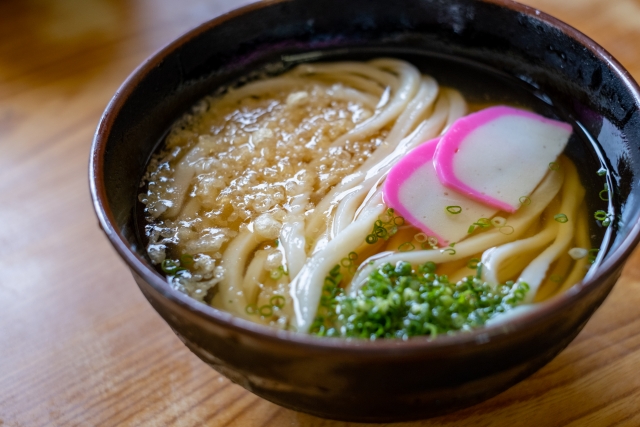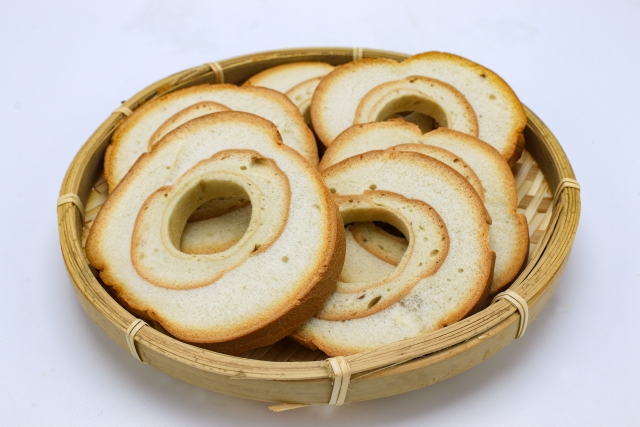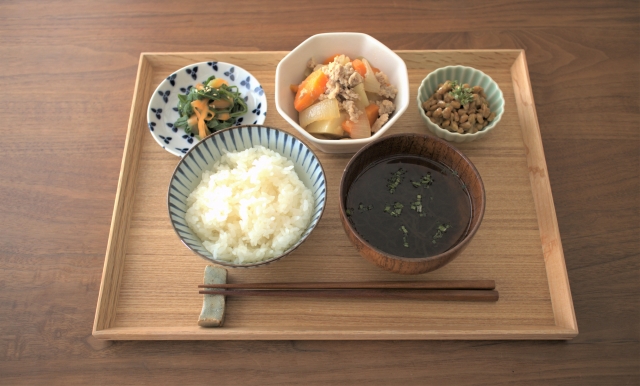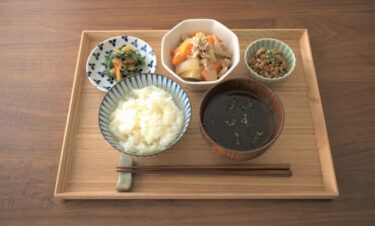Japanese traditional cuisine, known as washoku, is often considered healthy, but it also includes many fried dishes such as tempura and katsu. Additionally, while Japan has a strong rice-based food culture, there are also numerous dishes that use wheat flour, such as udon, tempura, and fu (wheat gluten).
1. Fried Dishes
- Tempura: Tempura is a classic Japanese dish where vegetables or seafood are lightly battered and fried. It’s known for its crispy texture and the natural flavors of the ingredients. Tempura is usually eaten with salt or tentsuyu (dipping sauce). Although it appears light, it is still high in calories due to the frying process.

- Katsu (Tonkatsu, Chicken Katsu, etc.): Katsu is a breaded and fried cutlet, usually made from pork or chicken. It’s a hearty and filling dish, often popular with men and young people. Tonkatsu is typically served with a thick sauce or miso for added flavor.

2. Dishes Made with Wheat Flour
- Udon: Udon is a thick noodle made from wheat flour. In the Kansai region, udon is typically served in a light broth, while in the Kanto region, it is served in a darker, soy sauce-based broth. Udon can be eaten cold (zaru udon) or hot (kake udon), with a variety of toppings.

- Tempura: Tempura itself is a dish that uses wheat flour to make the batter. The flour coats the ingredients, sealing in the flavors when fried. Seafood and vegetables are common choices for tempura, with large prawns being particularly popular.
- Fu (Wheat Gluten): Fu is made from the gluten of wheat flour and is often used in dishes like miso soup. It has a chewy texture, and there are various types, such as dried kuruma-fu and fresh nama-fu.

3. Healthy Japanese Dishes

Japanese meals are typically based on the concept of “ichiju-sansai” (one soup and three dishes), which promotes a balanced diet. Some examples of healthier dishes include:
- Sashimi: Sashimi is fresh, raw fish, which is high in nutrients and low in calories since no oil is used.
- Nimono (Simmered Dishes): Dishes like nikujaga (meat and potatoes) or simmered pumpkin are cooked in broth and do not require much oil, making them low-calorie and nutritious.
- Miso Soup: Miso soup is made with fermented miso, which is known for its health benefits. It typically includes ingredients like vegetables, tofu, or seaweed, providing a well-balanced dish.
4. The Balance of Rice and Wheat-Based Foods
While Japan traditionally has a rice-based food culture, wheat-based foods such as bread, pasta, ramen, and udon are now widely consumed. Ramen and udon, in particular, vary in flavor and style across different regions of Japan, offering a rich diversity of local variations.
Washoku is renowned for its diversity. It includes both healthy, nutritious dishes and heavier, fried foods, offering a wide range of flavors and cooking techniques. The fact that so many dishes use wheat flour, in addition to rice, reflects the rich and varied food culture of Japan.







